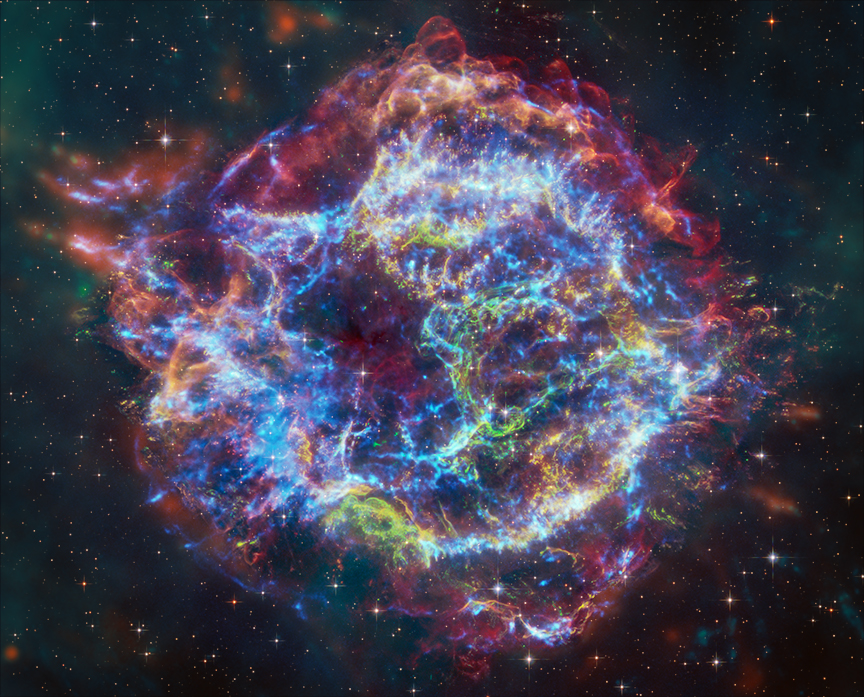NASA’s Chandra X-ray Observatory has unveiled three-dimensional models of famous space objects, which can now not only be studied on screen in three-dimensional detail, but even printed on a 3D printer!
These digital replicas of stars, supernovae and their remnants open up new possibilities for scientists and amateur astronomers as well. These include Cassiopeia A, the star BP Tauri, Cygnus Loop, and the supernova G292.0+1.8.
Cassiopeia A

This supernova remnant, which exploded 340 years ago, was hiding a secret – a network of filaments discovered by the James Webb telescope. A combination of Chandra data and infrared observations revealed: these structures are traces of shock waves that formed a web of oxygen after the explosion. The 3D model provides a look at how the explosion deformed the surrounding gas.
BP Tauri

The BP Tauri model is a young star (up to 10 million years old) surrounded by a protoplanetary disk. Chandra’s data found that its X-ray flares form glowing loops between the star and the disk. Such processes affect the birth of planets – hot plasma can “vaporize” light elements, changing the chemical composition of future worlds.
Cygnus Loop

This nebula is the result of a shock wave from a supernova colliding with an interstellar cloud. A 3D simulation shows how an explosion that occurred thousands of years ago created a structure with a diameter of “six full months” in our sky. Chandra data helped visualize gas in the Cygnus Loop heated to millions of degrees.
G292.0+1.8

Supernova G292 is a rare “oxygen” remnant formed after the explosion of a massive star. Its 3D model revealed an asymmetric shape that is explained by a “reverse” shock wave – it moves towards the epicenter of the explosion, changing the structure of the remnants.
Scientific breakthrough in open access
The models developed by Salvatore Orlando (INAF, Italy) and team have been published in leading journals and are available on the SketchFab platform. They combine Chandra data, advanced algorithms and theoretical calculations. Now everyone can “touch” the stars, explore them from all sides and even create their own space collection.

3D visualization helps astronomers better understand the dynamics of explosions, the evolution of stars, and even predict the future of our galaxy. And for the public, it’s a chance to see the Universe not as an abstraction, but as a physical object.
We previously reported on how the Chandra telescope captured the most mysterious objects in the Universe.
According to phys.org


